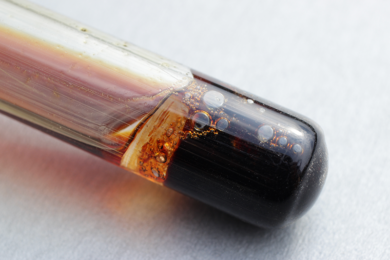The fall in coal prices in recent years has placed immense pressure on industry to maintain production and high levels of safety whilst dramatically reining in costs. Operational improvements and rationalisation has allowed many operations to reset their cost base, however those operations which wish to thrive in the current oversupplied market will need to embrace innovations which lead to a step change in both productivity, cost, and safety.
Drilling is an essential activity in coal mining, and forms a critical cost component in both mine development and mine operation. Current CRCMining projects are addressing the following challenges by incorporating continuous drilling methods and technology.
- The requirement to safely pre-drain gas from mining operations has resulted in extensive Surface to In-Seam (SIS) drilling ahead of underground development
- More conventional degassing practice involves fan patterns of 400-500 m long holes drilled into the seam from within the underground roadway while the mine is being developed
- Underground roadway development on the other hand requires 8 m holes drilled into the roof of the roadway for installation of roof-supporting cable bolts
“Considering the current state of drilling technology for these three applications, the fundamental practice of adding screwed sections of jointed drill rods has changed very little for over a century, although improvements such as the ability to directionally steer in real-time have been developed more recently.”
CRCMining says that an absence of viable alternatives has forced industry to accept the inherent limitations of jointed drill rods, namely; (1) low productivity associated with frequent rod changes, during drill advance and drill-string extraction; and (2) safety hazards associated with intense manual rod-handling and man-machine interactions. The ubiquitous nature of jointed rod drilling is in itself a barrier to realising alternative concepts, which may offer step-change productivity improvements, according to CRCMining’s Program Leader Scott Adam.
“The concept of continuous drilling involves drilling the entire target hole length in one continuous pass, as opposed to the stop-start advance with conventional jointed rod drilling. In this case a flexible and continuous conduit is the key enabler,” Adam said. “If rate-of-penetration (ROP) can be maintained, continuous drilling systems promises step-changes in drilling productivity by eliminating drill-rod change down times during both drill advance and drill-string extraction. Hazards associated with manual-handling of rods are also negated, greatly reducing the risk profile of the drilling activity. Continuous processes are potentially easier to automate, which brings with it a host of benefits in terms of operational efficiency.”
Recognising the benefits of continuous drilling, CRCMining researchers are also assessing if a new water-jet drilling tool can drill a borehole in a rapid, consistent, and self-regulated manner. The cutting action is performed by water-jets on a rotating drill head, and the drill tool itself is deployed using a continuous reel of flexible high-pressure hose (the flexible conduit). Water pressures for drilling typically reach 900 bar.
Continuous cable-bolt drilling techniques have the potential to dramatically improve the current roof support installation process for underground mining. Drilling for cable bolt installation is an essential requirement, yet it is a time-consuming ground-control activity for underground mining. It presents a costly bottleneck in the cycle of roadway development of underground mines, and is a major obstacle to the vision of rapid roadway expansion. Rock bolt drilling is considered high-risk with operational issues associated with rock falls, manual handling injuries, and incorrect operation of bolting machines. CRCMining has been examining a new continuous cable bolt drilling technique in partnership with ACARP.
The prototype developed, uses a flexible hose for continuous drilling of small <45 mm holes of varying lengths up to and over 8 m holes. This essentially negates the need for manually handling drill rods. Moreover, the continuous nature of drilling is highly compatible with automation and remote controlling, potentially removing operators from working near hazardous rock mass environments. “The ultimate vision of this technology is to provide a safer and more productive means of developing roadways and thereby accessing the orebody more efficiently. This new technique has the potential to reduce manual handling currently used for cable-bolt roof support installation,” Adam said.
This year CRCMining engineers conducted capability tests of the prototype and continuous drilling techniques at the Peabody Wambo mine, 30 kilometres west of Singleton in New South Wales. “The results demonstrated positive benefits of continuous cable-bolt drilling techniques through various strata conditions, although further developments are still required. Trials also revealed the need to stiffen the flexible drilling conduit to enable more effective penetration and reduction of conduit buckling through long-hole distances.”
This experiment led to solutions being identified by CRCMining engineers to re-design the system component to be integrated into future versions of the continuous drilling equipment. “When automated the new technology will improve productivity, reduce operator risks and has the potential to replace the manual drill-rod handling system. Knowledge gathered from this project will be applied to other continuous drilling technology projects planned later in the year.”










